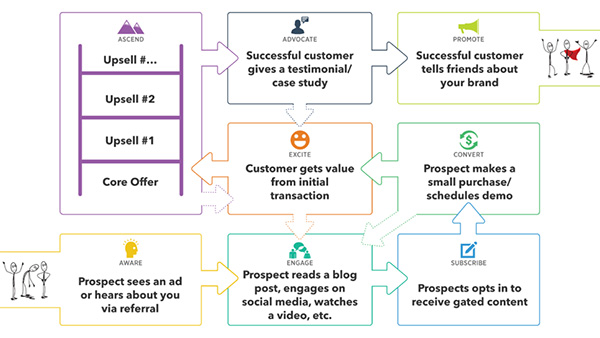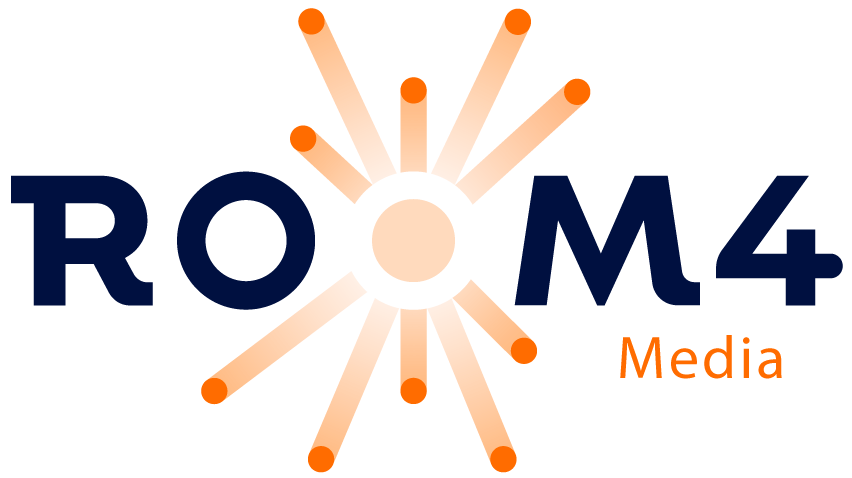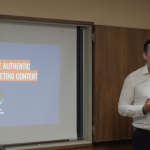Customer experience mapping
In today’s day and age, we are dealing with informed customers that have unlimited access to information, expects to find this information very quickly and tends to be attracted to those who offer a personalized experience.
For that reason, every business needs to know everything about their audience such as, what they search for, how they seek, what motivates them, what turns them off and what an excellent experience looks like to them.
In this article, we will be exploring customers journeys, and will also go through the type of content required at every stage of these journeys.
Let’s take a simple scenario of when someone buys a pair of jeans. It is a product that one decides pretty quick that they need or want one, looks at different options, buys it, wears it, and when it wears out, he/she recycles it and buys another one.
If we break it down, the customer first realizes that he/she needs to buy a pair of jeans; usually, a few top-of-mind brands come up. He then looks at their latest collection, shortlists his favourites, purchases the favourite one, checks out, signs up to receive the new collection updates, gets a discount code which eventually tempts him to buy another in the future. And it goes on and on and on.
In order to maximize the potential of this customer and make this process as smooth as possible, the first thing that every business needs to create are what we call ‘target personas’. Typically, the majority of target personas follow a similar journey. However, they usually require different marketing messages as they might be interested in various products, have different purchase preferences and take decisions differently.
What is Customer Journey design?
It is a way of visualizing how your prospects become aware that you and your brand exist, then transforming them into potential customers, subscribers, initial purchasers, repeated customers and hopefully in the future they become raving fans. It is the most effective way to map out what they need at every stage and what moves them from one stage to the next. When done correctly, businesses will be able to provide a personalized experience and identify upselling opportunities.
With a well designed and optimized customer journeys, you can create different touchpoints at every stage. There are many different customer journey frameworks out there, and in this article, we are going to explore the one that Ryan Deiss from Digitalmarketer.com uses.
It is an 8 step framework, and the more granular one goes, the more successful this exercise can be. The best way to do this is to use a whiteboard and get team members from different departments to use post-it notes to add their insights and knowledge in every stage:

Image from DigitalMarketer.com
They start by being strangers, then friends, then customers, later raving fans.
In the first three steps, your prospects are visitors; in stage 4, there is the conversion and turns into a customer until stage 6. In the last two stages, they become advocates and raving fans.
Let’s go through the different stages in further detail to explore how to create awareness, how to engage more with your prospects and finally, how to obtain and retain more customers.
Stage 1: The Awareness Stage:
In this stage, you will look into how prospects get to know that your business exists. Awareness can be generated through paid advertising, organic search, social media branding, content marketing, participating in online forums, contributing as a guest writer on blogs, a publication of infographics, referral marketing, podcasts, influencer marketing to name a few.
Content ideas for this stage:
- • Promotional Videos
- • Social Media Posts
- • Social Media Ads
- • Google Ads
- • Giveaway Contests
Stage 2: Engage with your prospects
Here you have to list those things that you do and moments that turn awareness into an engagement. Engagement happens your audience consume a piece of content, shares your content, participate in your online community and ask preliminary questions to name a few.
Content ideas for this stage:
- • Instagram stories
- • Ask whatever you want stories
- • Polls and giveaway contests
- • Comments
- • Direct messages
Stage 3: Subscribers
Here you have to list what you can do to capture your prospects information such as lead magnets, gated content, registration to an event, to name a few. At this stage, you have their contact information and their permission to follow up.
Content ideas for this stage:
- • eBooks
- • Webinars
- • Case Studies
- • Email Newsletters
- • Landing Pages
Stage 4: Convert to customers
At this stage, the relationship has changed because there has been some transaction, and they got converted from a visitor to a customer.
During this stage, you have to identify how to get micro-commitments from your subscribers. Could be with time or money such as purchasing a low ticket service, book a demo or attend a webinar.
Content ideas for this stage:
- • Interactive videos
- • Demo videos
- • Email newsletter
- • Demo/Product announcement
- • Event invitations
- • Webinars
Stage 5: Excite your customers
This stage is crucial as you need to make sure that your customers are happy with their micro commitment that they did at an earlier stage to avoid post-purchase doubts and remorse.
You need to make sure that they consume what they have purchased, know how to get started and most importantly that the promises mentioned during the earlier stages where delivered.
The big question here is, how can we drive them to that Ah-ha moment? We need to show them how your product or service is positively affecting them and the real value they are getting out of it. This could be done with a follow-up call, email or ad retargeting. If they get it, they will move forward to the next stages.
Content ideas for this stage:
- • Promoter score surveys
- • CRM website integration
- • Interactive videos
- • Social media retargeted ads ads
- • User generated content
Stage 6 – Ascend
This stage has multiple levels similar to a ladder. These could be various product offerings, start from the lower price entry point products and then moving them up the ladder with higher ticket products or services. As a marketer, you have to find out how to get them up from one level to the other.
Content ideas for this stage:
- • Interactive videos
- • Demo videos
- • Email newsletter
- • eBooks
- • Webinars
Stage 7 – Advocacy
At this stage, your customers become your advocates because they are happy and have been successful using your products and services.
They will be more than willing to leave positive reviews and testimonials.
Content ideas for this stage:
- • Post-sales campaign
- • Email discount secuences
- • Tutorials on best practices
Stage 8 – Promoter stage
Your advocates will become your promoters because they are actively promoting your products and services. Referrals create additional awareness, and it closes the loop.
Help them become successful, and they will actively refer you.
Content ideas for this stage:
- • Video testimonials
- • Referral program email marketing
- • Whitepapers
- • Webinars
The most important is to frequently visit your customer journey maps and optimize forward and backwards.
Don’t start with awareness, start with Ascend stage and optimize going backwards to focus on the awareness stage rather than focusing on the Awareness stage of a broken journey.
If this exercise is done with real insights provided by team members that represent different departments and no stages are overlooked, your business will stand a much higher chance of reaching consumers in the right place, at the right time, with the right message.




